28 Evidence-Based Benefits of Mango
Mango is one of those amazing fruits that are both delicious and full of health benefits.
Packed with vitamins, minerals, and phytonutrients, this sweet, yet tangy fruit is becoming more and more popular.
Available fresh during every season and in juices, frozen chunks, and powders year-round, the bright yellow-orange mango can give a tropical, health-building flair to many foods and drinks.
Far from being overly sweet, the flesh has plenty of fiber to balance the sugars, which can give you sustained energy all day without blood sugar crashes after you eat it.
In some traditions, even the leaves, bark, skin, and seed are used medicinally.
In this article, I will explain all evidence-based benefits of this wonderful fruit and I will explain how to buy, store and cook it the best way.
History
Mangoes were written about as far back as 4000 BC when the Buddha sat under the branches of a mango tree to meditate and teach his disciples.
Native to Southeast Asia and India, this fruit was considered sacred and was cultivated by Buddhist monks.
Between 300 and 400 AD, humans began cultivating mango trees in other areas of the Middle East as well as equatorial regions of Africa and South America.
The Portuguese brought the mango to Brazil when they arrived on their ships, and it was instantly a popular crop.
In the 10th century AD, it’s believed that Persians carried mangoes to East Africa.
Mexico, Ecuador, Haiti, Brazil, and Peru are some of the most prolific mango-producing regions, even in modern times.
This fruit has been grown in the U.S. for more than a hundred years but just in limited quantities, as only areas of Florida and California have the right climate and conditions (1).
The scientific name of the mango is “Mangifera Indica,” which literally translates to “an Indian plant bearing mangoes.”
Mango is important in Indian culture, where it symbolizes love, and a gift of a basket of mangoes is seen as a gesture of friendship.
The mango’s shape is the inspiration for the popular paisley pattern often seen in their fabrics, paintings, and architecture (2).
In some countries in Latin America, mango is street food, sold by vendors on a stick, with the skin peeled back.
While mangoes may be considered an exotic and rare treat by many in the U.S., they are actually the most popular fruit in the world (3).
Mango trees had historically been difficult to grow for disease resistance, especially to the anthracnose blight that can destroy entire crops.
This disease is characterized by soft black or dark brown spots on the fruit and leaves and results from a fungus that thrives in hot and wet environments.
The Haden variety was introduced in 1910.
While this type of mango is still grown today, it has been largely replaced by imported varieties that are not as susceptible to disease.
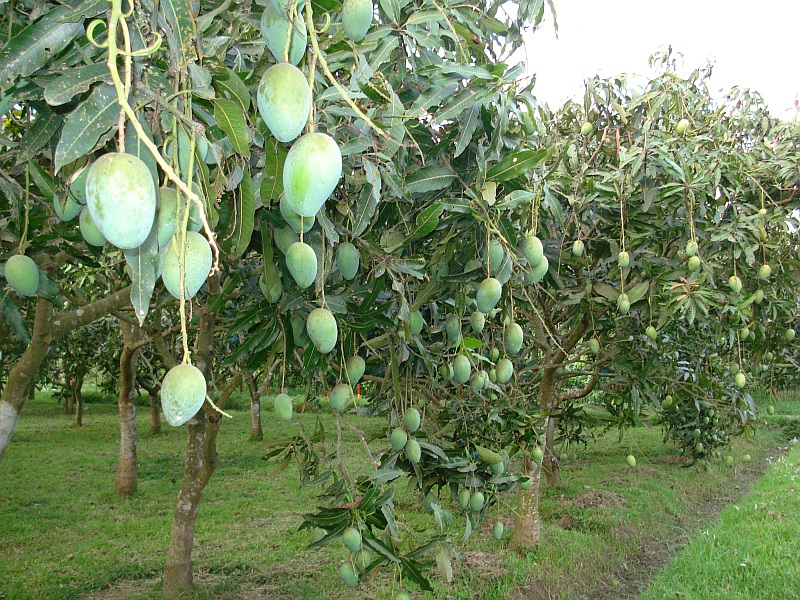
How Mango Grows
Mango trees are a type of evergreen and belong to the cashew family, which makes them related not only to cashews but also pistachios.
Mangoes are botanically considered drupes, which means they have a thick layer of sweet, edible flesh around a single seed stone, or pit, in the center, like a peach or a cherry.
Mango trees require tropical or subtropical conditions for optimal health and production, which is why their growth is limited to only certain countries and regions.
Mango trees have difficulty surviving frost, though some trees have been grafted onto the rootstock of other species of trees that handle frost better to make the mango tree hardier.
This is also one of the easiest and most reliable ways to propagate new mango trees and faster than growing a seedling from the pit.
The most used rootstock is from the Gomera-1 mango cultivar, which originated in Cuba, and is ideally suited to warm, coastal locations (4).
Ideally, mango trees grow where a rainy season is followed by a dry season, which triggers healthy fruit production in these types of trees that can grow to 130 feet high, and the leathery, thick leaves can create a canopy thirty-five feet wide.
Mango trees can be incredibly long-lived, some even surviving and fruiting after over three hundred years.
Mango trees are a flowering type of tree, creating white flowers that have five petals each and mild sweet smell.
Fruit forms from the center of this flower, which falls away as the fruit begins to grow.
It takes four to six years for a new tree to begin producing fruit.
Once the fruit begins to form on the branches, it takes three to six months for them to mature and ripen, and each fruit must be picked by hand.
For this reason, many producers keep the trees pruned to be shorter so that they have an easier and less risky time collecting the ripe fruit.
In some cases, trees can produce fruit twice per year instead of just once.
Once the fruit is ripe, it is kept shaded and tested for ripeness and the potential for fruit fly infestation.
The fruit is washed, sized, and treated with a hot water application to prevent fruit flies.
Some imported mangoes go through a process of irradiation.
Cases of mangoes are standardized to 8.8 pounds and allow for airflow between the fruit.
These cases are labeled with country of origin, count, treatments, and contact information.
In the U.S., growing space is limited and mostly confined to Puerto Rico, Florida, and California.
Roughly half of the mangoes grown in California are certified to be organic.
Mangoes today are grown for commercial production in India, China, Thailand, Indonesia, Pakistan, Mexico, Brazil, Nigeria, Bangladesh, and the Philippines.
About four hundred documented varieties of mango are available today, though only six of those are common during various seasons in the grocery stores.
These are the Ataulfos, Francis, Haden, Keitt, Kent, and Tommy Atkins, the last of which is the most widely commercially grown mango.
These varieties are popular because of their creamy texture, decreased the amount of fibrousness, and sweet taste (5).
The skin can vary from shades of green to yellow, orange and red but does not indicate the ripeness of the fruit.
Most people do not choose to eat the skin, though it has notable health benefits in addition to those of the fruit itself.
Health Benefits of Mango
Mango is one of the healthiest fruits you can eat.
See below for a list of its many benefits (11).
Controls Blood Sugar
Blood sugar spikes and drops are common in people who are overweight or obese, and this mechanism is implicated in insulin resistance and metabolic syndrome, which affects the development of diabetes.
Choosing the sweet mango instead of other sugary treats can help control blood sugar, which, in turn, regulates insulin levels and reduces the risk of these other diseases developing (12).
High in Fiber
Mango is very high in fiber while being lower in sugar, so it is slower to impact blood glucose, which means you don’t get the blood sugar spike and instead can enjoy more sustained energy after eating one (7).
Helps with Smoother Elimination
The increased amount of fiber is highly beneficial for keeping the intestines moving at a regular pace, and you’ll be able to avoid uncomfortable constipation (7).
Helps Metabolism
That same fiber is excellent at fueling the probiotic bacteria that live in your gut.
These bacteria not only help keep things moving so to speak but also aid in the absorption of certain vitamins, such as B12, which we need for good energy metabolism (6).
Contains Enzymes
Many people have problems with digestion, and fresh mango peel is a great choice for improving this important function.
Mangoes and their peels contain enzymes that help in the breakdown of carbohydrate, protein, and fat and can make it easier for your body to absorb nutrients from food (20).
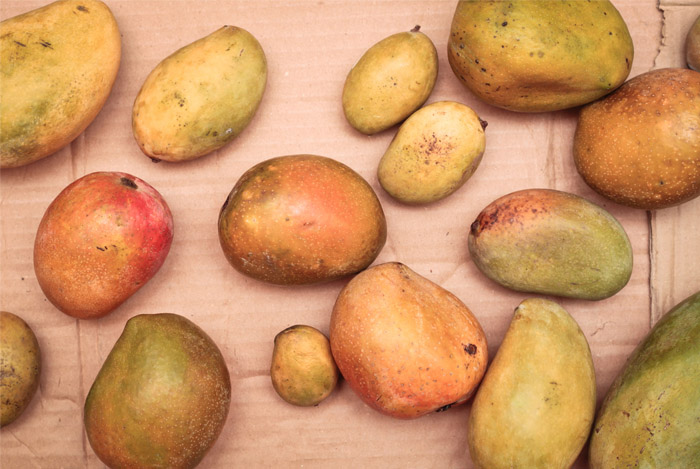
Provides Magnesium
Mango is high in magnesium, which is an electrolyte mineral that’s essential to your health.
Magnesium is especially helpful for heart health, as it helps muscles to relax more fully so that the heart can recover better between beats.
Magnesium is important for regulating blood pressure and also lowers blood pressure for people who have high readings or have been diagnosed with hypertension (8).
Improves Brain Functions
This sweet golden fruit is a boon to brain function.
Mango has been shown to maintain neuronal integrity and preserve cognitive function.
This could mean a reduced risk of age-related cognitive decline and Alzheimer’s.
It’s also possible that it can help in maintaining brain health after trauma, such as concussions and strokes (9).
Protects against Free Radicals
Mango can reduce the body’s load of reactive oxygen species, or ROS, which are free radicals generated in the cells during normal energy production.
This means that the cells in your tissues can remain healthier for longer, and it may even reduce the risk of abnormal cell growth as seen in such diseases as cancer.
In the same way, mango can protect the integrity of red and white blood cells, enhancing oxygen delivery, immunity, and overall health (10).
Reduces Radiation Damage
Mango can even protect against radiation damage!
You experience radiation on a low level each day, from such sources as sunlight and a range of electronic equipment.
Traveling on planes increases your radiation exposure since you lose much of the protection of the environment.
Many types of medical equipment use radiation for diagnosis and treatment.
If you’re planning on having any X-rays or air travel, eating a mango each day can help reduce the damage from these dangerous waves (12).
Protects Against Cancer
Some recent studies are using an extract of mango, called mangiferin, as a treatment for breast cancer, colon cancer, and HIV.
Mangiferin is immunomodulatory, which means that it helps the immune system to function better.
By regularly eating mangoes, your immune system is better able to recognize a cancerous threat to your health, and cancer cells would be easier for your body to destroy thanks to this unique compound (13).
Rich in Vitamin C
Mango also contains a great deal of vitamin C.
This vitamin has been shown to decrease the overall mortality for those diagnosed with cancer, extending the average survival rate for those who focus on adding plenty of this vitamin to their diet (31).
Protects against HIV
The same compound that helps protect against cancer can help your immune system battle HIV infection, even the drug-resistant kind.
Since it’s a compound that makes the systems in your body work more efficiently, there is no way for the virus to compensate for the natural action of your immune system (14).
Protects against Atherosclerosis
This same mangiferin compound can also help reduce the risk of heart disease.
Mangiferin can “significantly reduce” the total amount of cholesterol in the blood, including triglycerides and the more harmful LDL cholesterol (16).
Defends DNA Structure
Eating mangoes is a good way to keep your DNA stable.
DNA is in the nucleus of each of your cells, and it’s when this DNA becomes damaged through oxidative stress, age, diseases, and poor nutrition that they begin to function less well and can develop harmful mutations.
Keeping your DNA intact is essential for long and healthy life and can help ward off various diseases, such as cancer, autoimmune disease, and many types of degeneration.
It’s because of the specific phenol and antioxidant capacity of mangoes that this protection is possible since these micronutrients can travel inside the cells that need them most (15).

Provides Eye Health
Vitamin A is essential for eye health, and a deficiency of this vitamin can cause difficulty seeing in all types of light conditions, even including blindness.
Because mango contains high amounts of vitamin A, eating this fruit can ensure you maintain better vision and even be able to see better in near darkness (21).
Helps Repair Brain Tissue
Here is another way mangoes can help your brain.
This fruit contains glutamine (which is different from glutamate), which is a precursor to glutamic acid, an amino acid needed in large amounts in the body for tissue repair and stress management.
In the brain, glutamic acid helps regulate the function of neurotransmitters, so the effects of anxiety, depression, insomnia, and cognitive impairment can be lessened (22).
Improves Skin
Mangoes contain carotenoids, which are antioxidant compounds that give the fruit its vibrant color.
These carotenoids are especially beneficial for skin health, helping skin stay hydrated and plump, as well as giving you a healthy glow.
Even freeze-dried mango powder retains most of the antioxidant content of the fresh fruit (18).
Rich in Nutrients
A whole mango has only about 135 calories, 35 grams of carbohydrate, and almost no fat.
It contains 32% of your daily recommended intake of vitamin A, 96% of vitamin C, 12% of vitamin E, 11% of vitamin K, and 14% of vitamin B6.
It contains smaller amounts of many more vitamins, including folate, pantothenic acid, and thiamin.
Mangoes also contain potassium, copper, magnesium, manganese, and selenium, all of which are needed for healthy bones, arteries, skin, and other tissues (17).
Prevents Chronic Diseases
Many people today suffer from chronic degenerative diseases, such as heart disease, cancer, and neurodegenerative problems.
Mango is high in vitamin C, which has been shown to be an important cofactor in helping stave off these conditions.
It’s noted that the amount of vitamin C needed to prevent chronic diseases is higher than what’s needed to prevent scurvy of the gums, so aiming for more than 100% of the daily recommended intake is good (28, 29).
Improves Joints
Since vitamin C is a necessary part of the creation of collagen in our bodies, eating more of these fruits can help us make more collagen, which is important in keeping the joints flexible and strong and pain-free as you age (29).
Aids in Weight Loss
Mango skin can help fight fat.
Researchers looked at the flesh and skin of various varieties of mango.
While the flesh didn’t show any specific effect on fat accumulation in the body, the skin of the mango did.
Extracts from the peel showed significant inhibition of adipogenesis, which means that fat was unable to be stored (18).
Reduces Blood Pressure
Mangoes are high in magnesium.
This mineral is important for overall health but can be especially important for those who suffer from high blood pressure.
Magnesium helps muscles and arteries to relax more fully, naturally lowering this potential risk factor (23).
Strengthens Bones
This golden fruit contains vitamin K, which is essential for strong and healthy bones.
Most people don’t get enough of this important nutrient since it’s more common in green leafy vegetables that may not be as easily adapted to the diet as this sweet fruit.
This could be an easier way for more people to improve the strength of their bones (24).
Helps Prevent Anemia
Anemia is a condition where there aren’t enough red blood cells to carry oxygen to tissues, resulting in fatigue in milder cases and severe organ damage if left untreated.
It’s often caused by a lack of iron in the diet, and eating more mangoes can help prevent this condition.
Mangoes are high in iron, making them an ideal treat to help avoid this deficiency (25).
May Prevent Asthma
One of the nutrients mangoes contain, beta-carotene, is known to help prevent asthma symptoms, especially exercise-induced asthma.
While many people are able to treat these symptoms with steroid inhalers, this natural method has been shown to be effective for those who wish to avoid steroids (26).
Helps Fertility
Many people are looking for a little boost in lovemaking, and men especially get some help from eating more mangoes.
Some people have even written about its aphrodisiac qualities, making it easier to get into the mood.
Mango contains vitamin E, which is important in the health of reproductive organs.
Studies have shown that this vitamin improves the quality and motion of sperm, even in infertile men (27).
Helps Prevent Strokes
Since mango is able to help reduce blood pressure and is high in vitamin C, which strengthens arteries, this fruit can help reduce the risk of this life-threatening disease.
Studies have shown that regularly consuming vitamin C long term is the best way to get this benefit, so a mango a day seems to be a pretty good strategy (30).
Promotes Workout Recovery
Mango’s micronutrients and electrolytes are ideal for helping muscles heal after a hard workout and replenishing your body’s store of these essential elements.
Not only that but the natural sugars found in this fruit are also perfect to help reduce post-workout fatigue.
This fruit will replenish your glycogen that gets burned off during intense exercise and may even help you to exercise harder for a longer time, thus improving your overall endurance and strength.
How to Buy and Store
Mangoes are becoming very easy to find in most grocery stores and are available during most times of the year thanks to the dual harvesting seasons in tropical climates.
When choosing mangoes, color isn’t the best way to judge ripeness.
Red does not necessarily mean that it’s ripe, and ripe fruit can range all the way from green to deep red, with most fruit showing many different colors on their skin.
Instead, gently press on the skin of the fruit and see how tender it is.
A ripe mango will have just a small bit of tenderness, while unripe fruit will be very firm.
If the fruit is fairly soft to the touch, it’s past its prime, and you should choose another.
You can use the feel of peaches as your guide, as the tenderness related to ripeness will be similar.
Refrigeration will slow the ripening process, so if you choose ripe fruit and don’t plan to eat it immediately, move them to the fridge.
Unripe fruit will ripen over a few days if left on the counter.
If you want your fruit to ripen faster, you can place it in a paper bag and leave it at room temperature.
Ripe mango can be stored for up to a week in the refrigerator and for a couple of days on the counter.
These can be used in smoothies or as ice cubes to flavor teas and other drinks.
To freeze mangoes, peel them, chop them into chunks, and then tightly seal in a freezer-proof bag.
They will last in the freezer for up to three months.
You can also puree mangoes and freeze in an ice cube tray.
These can be used in smoothies or as ice cubes to flavor teas and other drinks.
There is a trick to cutting mangoes that makes it a lot easier to serve and eat.
Mangoes have a long, flat seed in the center, and you can tell which direction that seed is by the shape of the fruit.
Stand the mango on your cutting board with the stem side down.
When looking at the mango from the top down, it will look oblong.
The seed is oriented long ways, so you can slice down each side, cutting off the “cheeks,” or the largest bits of flesh.
The center will mostly be the seed, with very little flesh attached, which you can cut off, or simply snack on while preparing the rest of the fruit.
The cheeks can then be stored on the inside into slices or cubes and easily scooped out.
You’ll want to save the skin for a surprise recipe later.
Note that mango flesh is a little on the slippery side, so be careful when cutting.
You can cut several mangoes at the same time if you would like them to be easier to use in your recipes later in the week.
Cut mango can be kept in the fridge for up to five days.
How to Add More Mangoes into Your Diet
Mango is a versatile fruit and can be easily added to sweet dishes, though they can be a bright contrast in savory meals as well.
Mangoes are a perfect addition to smoothie recipes, are great when blended and made into popsicles or in sauces, or can be eaten on their own.
As a sweet treat, raw mango is a perfect snack, or you can slice it and grill it with a dash of sea salt for a creative warm-weather bite.
Just as with any other new food you want to add to your diet, it’s best to start slowly and see what you like.
It’s also a good practice to add it to dishes you already like or meal preparations that you’re already in the habit of making so that it will be easier to add more frequently.
Mangoes are not recommended for use in any recipes that need to gel or harden.
These fruits contain high amounts of enzymes, and while they are healthy for you, they will interfere with such foods as gelatin that need to set firmly and may create an unfavorable texture.
Try pairing pureed mango with iced tea, or use chopped mango in a topping for your steak.
Mango is great with seafood and heavier meats since it has a citrusy pop.
Mango is great in such desserts as frozen yogurt or ice cream, added to oatmeal, or used as a crepe stuffing.
Easy Mango Recipes
Mangoes can be used in a variety of dishes when a citrusy sweet punch is what you’re hoping to achieve.
From smoothies, breakfasts, and savory lunches and dinners all the way to dessert, mango is a versatile ingredient that can complement many other flavors.
Try these easy mango recipes to brighten up your meal plan this week.
Mango Raspberry Protein Smoothie
- 1 fresh mango, peeled and chopped
- ½ cup frozen raspberries
- ½ cup plain non-fat Greek yogurt
- 1 cup unsweetened non-dairy milk
- 1 scoop vanilla protein powder
Place all ingredients into a high-powered blender, and blend until smooth.
Pour into your favorite glass and enjoy.
If it is too thin, add 3–5 ice cubes and blend again.
If you would like your smoothie to have more sweetness, add 2–3 tablespoons of fresh raw honey.
Grilled Mango Shrimp Kabobs
- 1½ pounds raw peeled and deveined shrimp
- 2 large mangoes, peeled and cut into 1″ cubes
- 2 small bell peppers, cut into 1″ cubes
- 1 pound peeled pearl onions
- 1 cup Teriyaki sauce
- Wooden skewers soaked in water overnight
On each skewer, alternate threading a shrimp, a mango cube, a bell pepper cube, and a pearl onion until there is about 1½” of skewer remaining on each side.
Once all skewers are loaded, place on a grill prepared at high heat.
Glaze the top with teriyaki sauce, and then flip after about 4 minutes and glaze the other side, cooking for about 3 more minutes or until shrimp are opaque.
Alternately, you can bake them in an oven at 400 degrees for about 10 minutes or when the shrimp are opaque.
Mango Jalapeno Fish Tacos
- Flour tortillas
- 3 skinless fillets of your choice of fish, such as salmon or tilapia
- Avocado oil
- Smoked paprika
- Garlic powder
- Onion powder
- Chopped romaine lettuce
For the salsa:
- 1 mango diced into small chunks
- ¼ onion, diced finely
- 1 jalapeno, with seeds removed, diced finely
- juice of 1 lime
- 1 tablespoon fresh chopped cilantro
- Pinch of sea salt
For the sour cream topping:
- ½ cup sour cream
- 1 jalapeno, with seeds removed, diced finely
- juice of 1 lime
- Pinch of sea salt
- Pinch of black pepper
Begin by lining a baking tray with parchment paper so that the fish does not stick.
Preheat your oven to 350 degrees.
Place fish on the baking tray, and lightly coat with avocado oil, using roughly 1 tablespoon.
Lightly sprinkle the seasonings evenly on your fish, using approximately ¼ to ½ teaspoon of each.
Bake fish for 10–15 minutes until it is cooked through.
While fish is baking, you can make the next two elements.
Place all salsa ingredients into a bowl and mix well.
Leave at room temperature.
Place all sour cream toppings into a small food processor and blend until smooth.
Let sit at room temperature.
Once fish is baked, you can assemble your fish tacos.
On each tortilla, add a small handful of the chopped romaine lettuce, several small chunks of fish, a scoop of the mango salsa, and a spoonful of the jalapeno sour cream.
This is a great light and refreshing meal and filling without being too heavy.
Mango Avocado Black Bean Dip
- 2 large mangoes, roughly chopped
- 1 can, about 15 oz. of black beans, drained
- 1 can, about 15 oz. of chickpeas, drained
- 1 medium or large ripe avocado, roughly chopped
- ½ red onion, roughly chopped
- 1 jalapeno pepper with seeds removed
- Dash of sea salt
- Dash of black pepper
- Dash of chili powder
- 2 tablespoons of lime juice
Place all ingredients into a food processor and blend until smooth.
This is best eaten within 3 days, since the avocado may begin to brown, which may change the flavor and texture.
This dip is ideal for chips but is also perfect alongside many vegetables or as a topping for tacos.
It can also be used as a dressing for salads.
Curried Mango Chicken
- 1 large mango, cut into thin strips
- 1 large onion, cut into thin strips
- 1 red bell pepper, cut into thin strips
- 1 green bell pepper, cut into thin strips
- 1 lb. boneless chicken breast, cut into thin strips
- 1 cup chicken broth
- 6 tablespoons fish sauce
- 4–6 cups cooked brown rice or cooked quinoa
- 2 cans of coconut milk
- 3 tablespoons red curry paste (or more, to taste)
- ⅓ cup coconut oil
In a large wok or high-sided frying pan, heat the coconut oil until melted.
Add curry paste and stir for 30 seconds.
Slowly stir in coconut milk and chicken broth.
Add chicken and simmer on medium heat while stirring for 10–15 minutes or until cooked through.
Add onions and bell peppers, and continue cooking until tender, about 7 minutes.
Add mango and fish sauce and remove from heat.
On individual serving plates, scoop about 1 cup of cooked rice or quinoa, and then spoon the curried mango chicken over the mound of rice.
Serve and enjoy.
Mango Skin Chips
- Mango skin from any previous recipe
- Sugar
- Cinnamon
Cut mango skin into strips or any shape you find pleasing and easy to eat.
Spread skin on a baking sheet in a single layer with no overlap, with the flesh side up.
Sprinkle each piece lightly with sugar and cinnamon or any other combination of seasonings that you enjoy for a different flavor.
Bake in the oven at 400 degrees for about 15 minutes or until they reach your desired crispness.
You can choose a hint of sea salt as your seasoning, which makes these great chips go with your favorite dips.
Mango Lassi
This is a wildly popular drink in Southeast Asia, and there are countless variations depending on the shop or home you are visiting.
This type of drink is served to cool the body during the hottest parts of the year and is packed with nutritional value to boot.
It’s essentially a smoothie, and you can even make it dairy free if you prefer.
- 1 large mango, roughly diced
- 4–6 ice cubes
- 1 cup unsweetened plain yogurt (full fat is best, but no fat or low fat will also work)
- Pinch of ground cardamom
- 1 teaspoon of fresh raw honey (optional)
- 1 tablespoon of pineapple juice (optional)
- Pinch of ground cinnamon (optional)
Put all ingredients into a high-powered blender, and blend until smooth.
If your lassi is too thick, add a splash of water or milk and blend again.
Pour into your favorite glass and enjoy.
Precautions
Mango is related to cashews and pistachios, as they are in the same type of plant family.
Anyone who is sensitive or allergic to cashews or pistachios may have a negative reaction when trying mango, so use caution.
Mango is also a distant cousin of poison ivy, so if you are prone to extreme poison ivy reactions, be aware that a reaction to mango is a possibility.
Some people who react to latex have noted they react the same way to mango.
Mango contains a compound called urushiol through which some people can develop dermatitis, though it is a rare reaction.
Anyone who has poorly functioning kidneys should avoid or limit the consumption of mango.
The kidneys are responsible for removing excess potassium from the bloodstream.
Since mangoes are particularly high in this mineral, they may overload the kidneys and cause too much potassium to circulate through the body.
This can become a dangerous and potentially fatal complication, so those with serious kidney issues should avoid this fruit.
Those with Crohn’s disease should also be cautious.
Some people with this condition find that stone fruit, such as mango, cherries, and peaches, cause negative reactions.
Conclusion
With all these benefits, mangoes are a delicious way to stay in great health!
There are a few precautions to take for some individuals when thinking about trying mangoes for the first time or who may have certain health issues and allergies.
Nevertheless, for most people, mangoes are an excellent addition to your menu and offer many benefits.
Mangoes are a low-calorie, highly nutrient dense food.
They contain compounds that can help you lose weight, keep away heart disease and cancer, improve brain function and digestion, and offer many other health benefits.
Mangoes have become easily accessible and are affordable for almost any budget.
Mangoes are delicious raw and on their own, or they can be creatively added to many different types of recipes.
You may not be able to grow your own mango trees if you don’t live in the tropics, but you can choose the ripest, juiciest fruits to add to your dishes.
Since they’re available year-round, you can pick up one today.
FDA Compliance
The information on this website has not been evaluated by the Food & Drug Administration or any other medical body. We do not aim to diagnose, treat, cure or prevent any illness or disease. Information is shared for educational purposes only. You must consult your doctor before acting on any content on this website, especially if you are pregnant, nursing, taking medication, or have a medical condition.
HOW WOULD YOU RATE THIS ARTICLE?
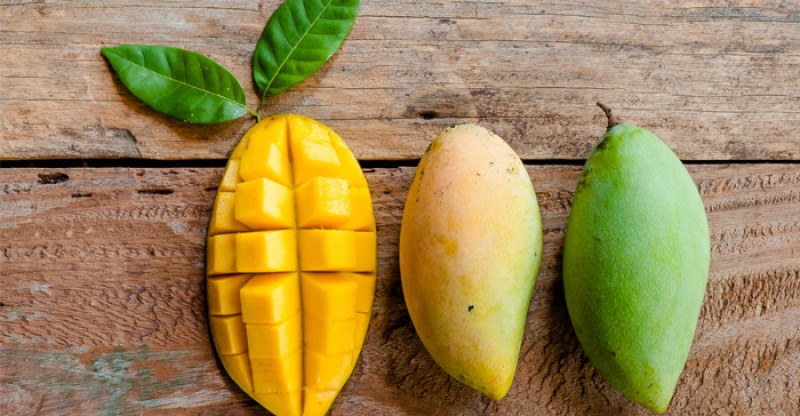


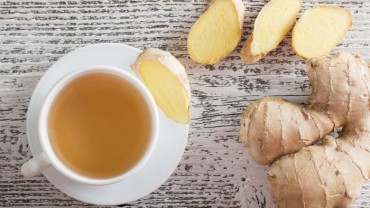
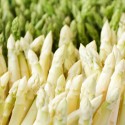


Does mango keep its benefits when chopped in a mixer?
Thank you not only for listing in details the benefits of mango but for adding the recipes, too!
Amazing post! Mango is incredible. I love learning all about this queen of fruit!
I am delighted for accessing this info, I always thought i ate too much mango now I am happy that i did